Ecuador is one of the few countries offering the option of independent travel with all the conveniences of an organized tour, serving up the best of both worlds. The “Wanderbus” is a hybrid solution for those of us who prefer flexibility and solitude of solo travel as opposed to feeling like cattle being herded through the masses, following the umbrella-waving tour guide while making all the mandatory carpet and jewelry shop stops. The infrastructure feels like “cheating off someone else’s homework” to visit all the highlights while letting someone else map out bus schedules, connections, and arduous hours of research that can otherwise wear a person down.
The Wanderbus circles the country in a clockwise direction, making all the stops at popular tourist destinations, allowing one to “hop on/hop off.” The bus offers several tour options depending on the route one wants to cover. Travelers of all ages from all countries can hitch a ride from city to city, or purchase the “Wanderpass” which covers the entire circuit. Hop off at your chosen city, stay a few days, and hop back on the next bus as it makes the loop. The pass is good for one year.
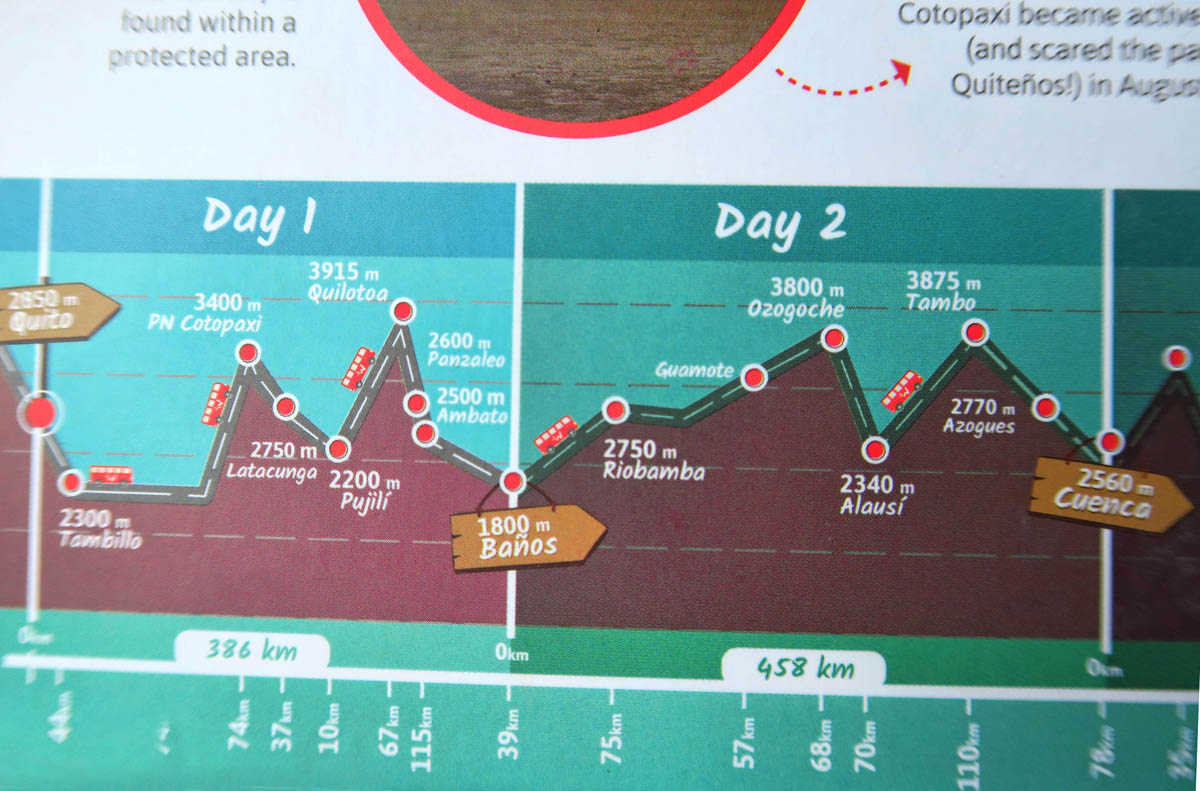
This seat-back card shows the elevation gain for the first two days of the trip. (Triple the number to convert meters to feet.)

Looking out from my bus seat through lots of windows. Uncrowded buses afford beautiful vistas from both sides of the bus.
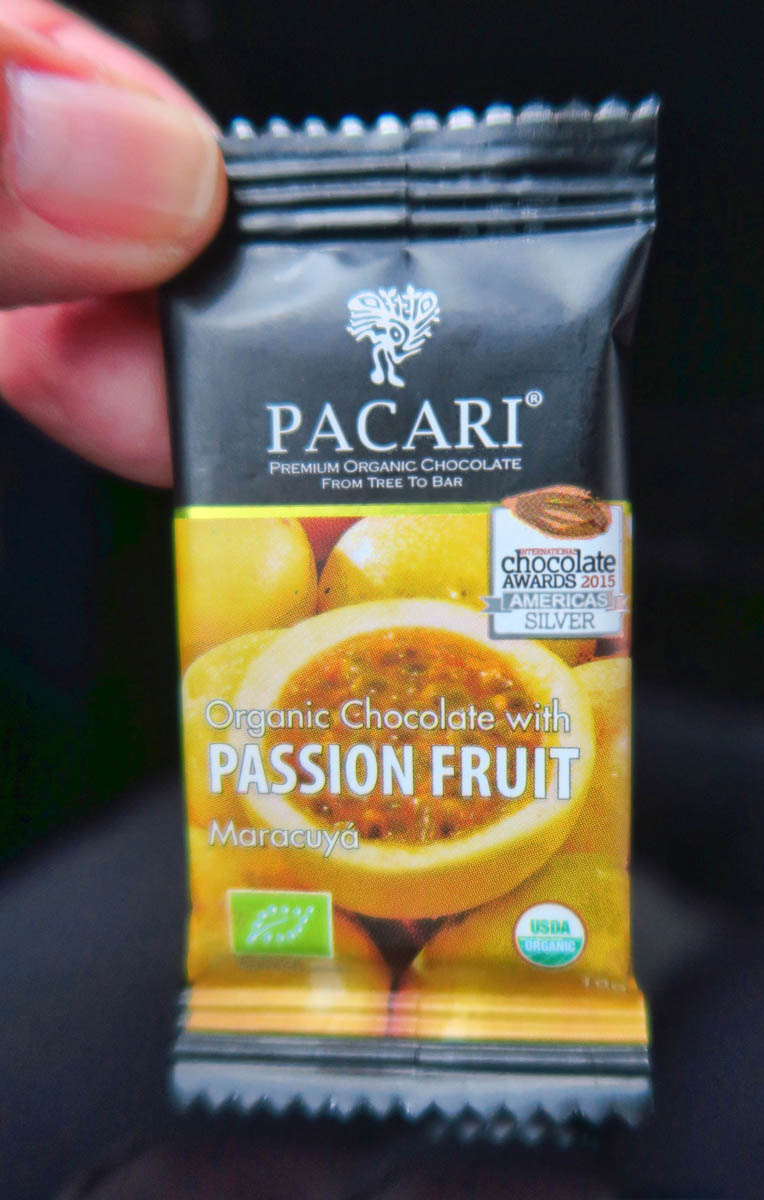
We have many opportunities to try local Ecuadorian products. The country is known for its dark chocolate production.

At one stop, our guide bought us all roses. This one lived for three days without water. Roses are the nation’s fifth-most exported product, behind cocoa, bananas, petroleum and shrimp. The equatorial sun aids in growing long, straight stems.
With my Galapagos experience now behind me and my Canon G7X now repaired, I hoped to see more of the country. Though I visited Ecuador back in the early 80’s while working for Braniff Airlines, I was only in Quito long enough to straddle the equator with a foot in each hemisphere. With no concrete plans on where I would go or how long I would stay, the Wanderbus seemed like a good option. Having only bought a one way ticket into Ecuador, I had the freedom to wander…..and what better way than the Wanderbus!
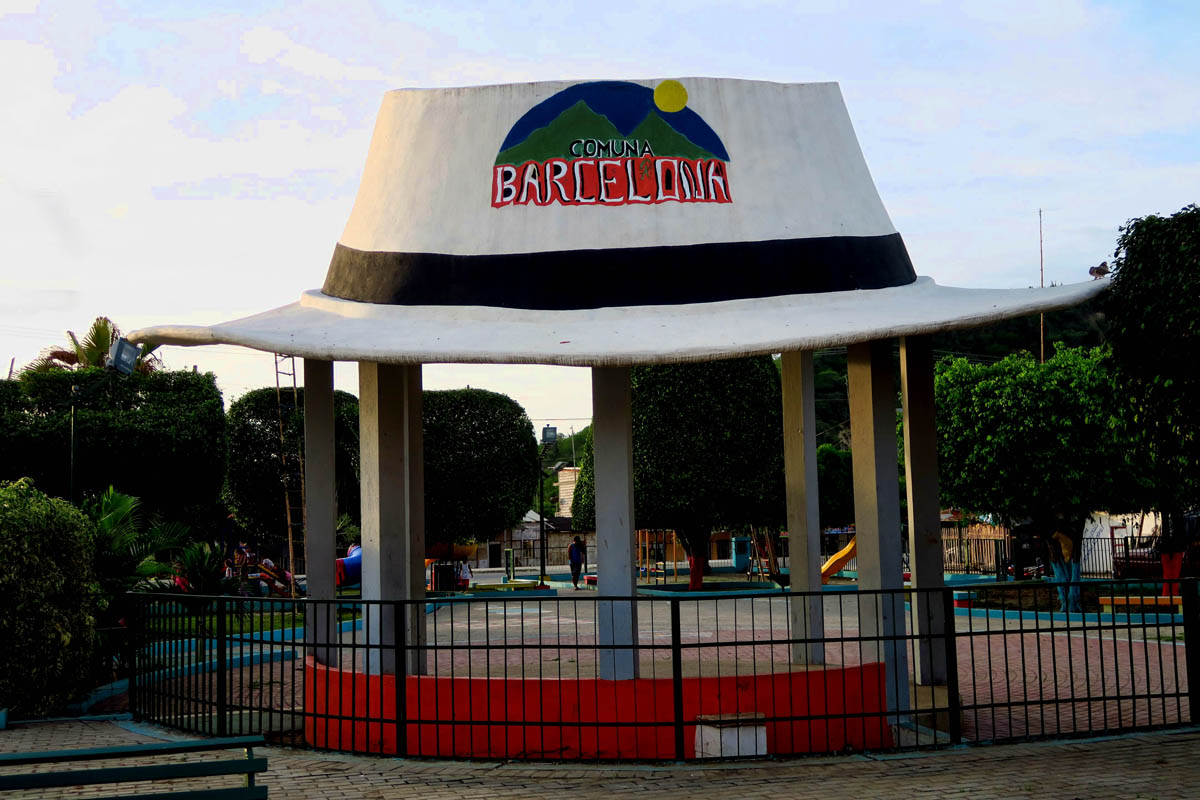
Our first “rest stop” is Ecuador’s version of Barcelona. This area is known for growing the toquilla palm used in making the “Panama” hat. Despite their name, Panama hats have never been made in Panama. The true name is the “Montecristi” which originated in Ecuador, where they are still made today. The hats earned their misnomer having been worn on the construction site of the Panama Canal.

Shoots from the toquilla palm are beaten, boiled, then soaked in sulfur to lighten the color. The shoots roll up when dried, and are then hand woven into hats.
My initial impression was that at $197, the Wanderbus was a bit overpriced. That’s a lot of money for a bus ticket in a country where beer can be had for a buck. I could follow the same route and make all the same stops for half the price. But all it took was one local bus to convince me otherwise. Unlike Mexico with their efficient, streamlined first class bus system, buses in Ecuador are like the local “milk run,” stopping frequently to let passengers off, and picking up passengers waiting alongside the road. It matters not that the bus is full. Passengers will either stand in the aisles, or in the case of indigenous women, just sit in the laps of those fortunate enough to have snagged a seat! Wedged in a small seat, elbow to elbow between an aisle packed with swaying bodies, and windows covered with heavy fog, Ecuador’s high altitude winding mountainous roads can quickly turn a crowded local bus into feeling like a claustrophobic submarine ride.
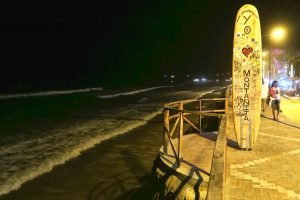
My first stop on the Wanderbus is the surf town of Montañita…not my kind of place, so I got back on the bus the next morning.

Montañita is a big party town. The pounding music continues on into the night. Instead of street food, all the kiosks sell cocktails.

These oysters are massive. You can tell how big they are by comparing them to the full sized onions and tomatoes in the upper right.
What I would lose in exposure to the local culture by traveling in a bus full of foreign tourists, I would more than gain with the many rest stops along the way to visit local farms, businesses, and markets. Every leg of the trip included at least two stops organized to patronize local businesses. Breakfast at a local dairy farm, a cooking class at a beach-side fishing village, a tour to see Monticristo hats being made, (don’t call them Panama hats!) helped break up the long driving days. Each route was staffed by a young guide, fluent in both English and Spanish, narrating the trip with tips, trivia, and even a supply of snacks along the way.

The next morning, we travel on up the coast, with a stop at Puerto Cayo, northern border with Machalilla National Park.

Here, we have a cooking demonstration, followed by a traditional breakfast of “tigrillo,” mashed green plantains sauteed with onion and pepper, served with cheese.
I appreciated the feeling of added security during my Wanderbus journey. When we would stop at a destination, the driver would either stay on board with the bus, or doors would be locked. Unlike local buses that are constantly having the cargo doors opened, I never felt like my belongings were at risk. Still feeling on edge following the theft back in Quito, it was an added bonus to be able to relax and enjoy the ride without constantly having to keep an eye on my luggage.

Another breakfast spot at a local dairy farm. Travelers were given the opportunity to milk the cow. I passed.
Wanderbus is not the perfect solution. The buses only make the circuit every other day, so if one hops off in a certain destination, they will need to commit to two overnights while waiting for the next bus to come along. The buses don’t travel at all on Sunday, so a stop over the weekend could necessitate three nights in that destination. And the buses don’t travel at night, so there are mandatory stops at the end of the day regardless of whether one has plans to visit. Of course, one can always resort to public transportation should the Wanderbus schedule not work out. This was my only option on one leg of my journey. All it took was one local bus ride to convince me that Wanderbus was well worth the wait!

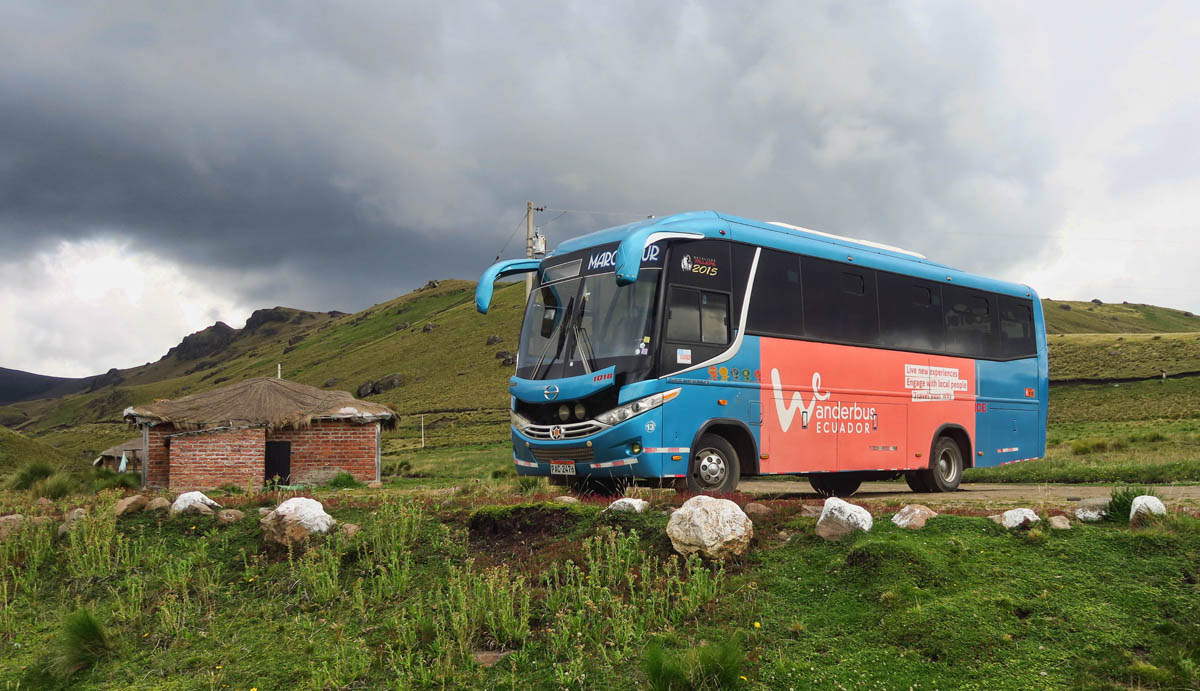




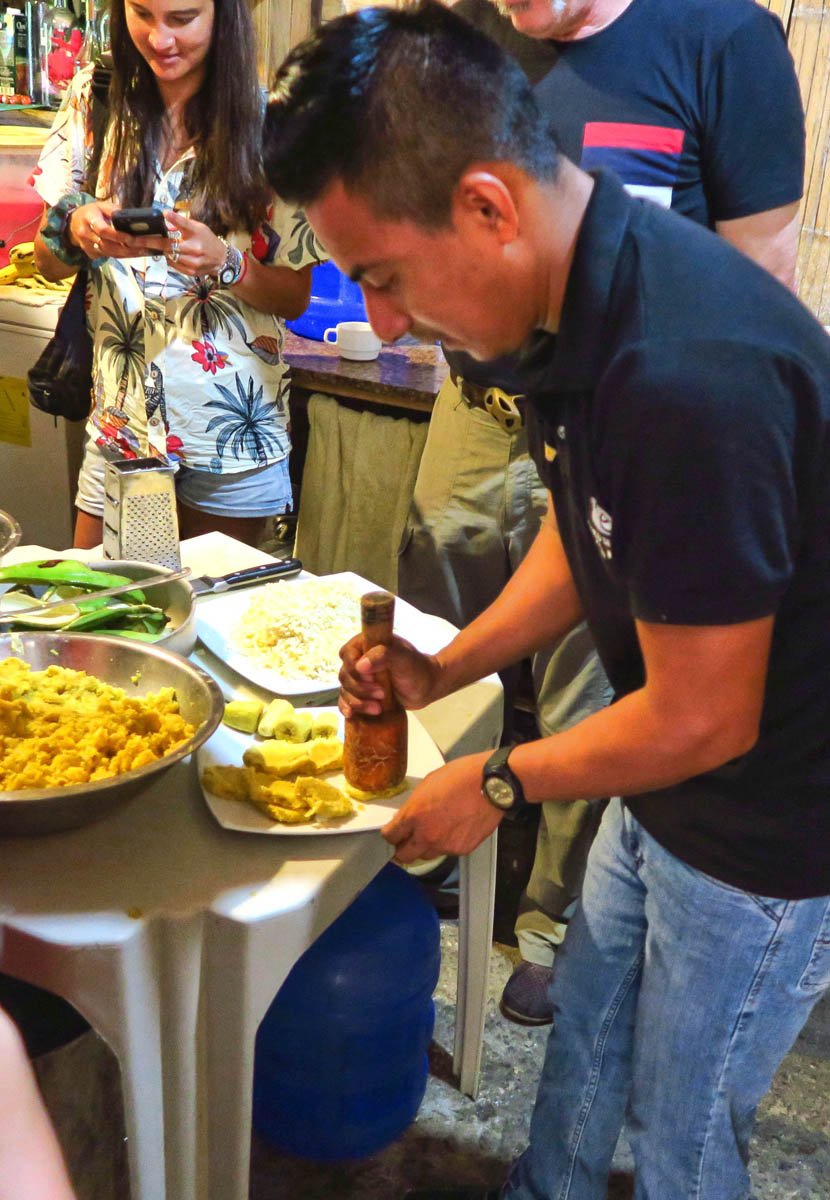



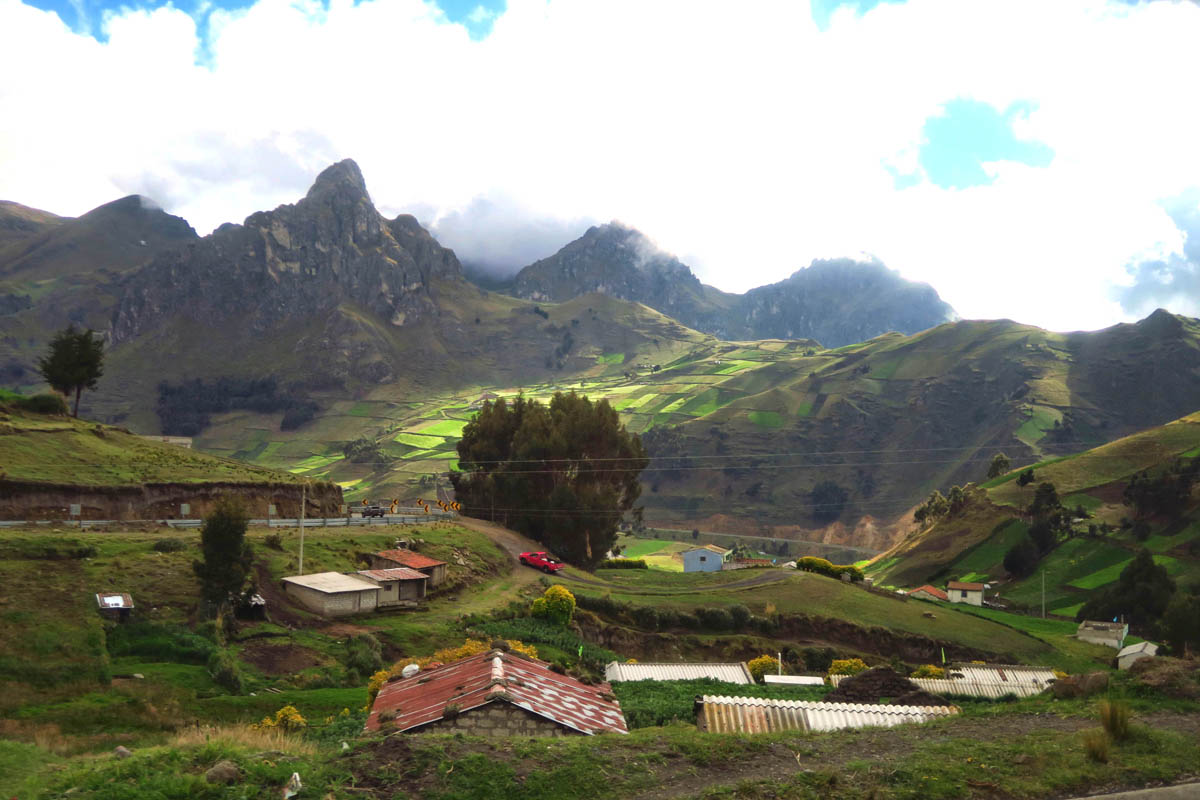
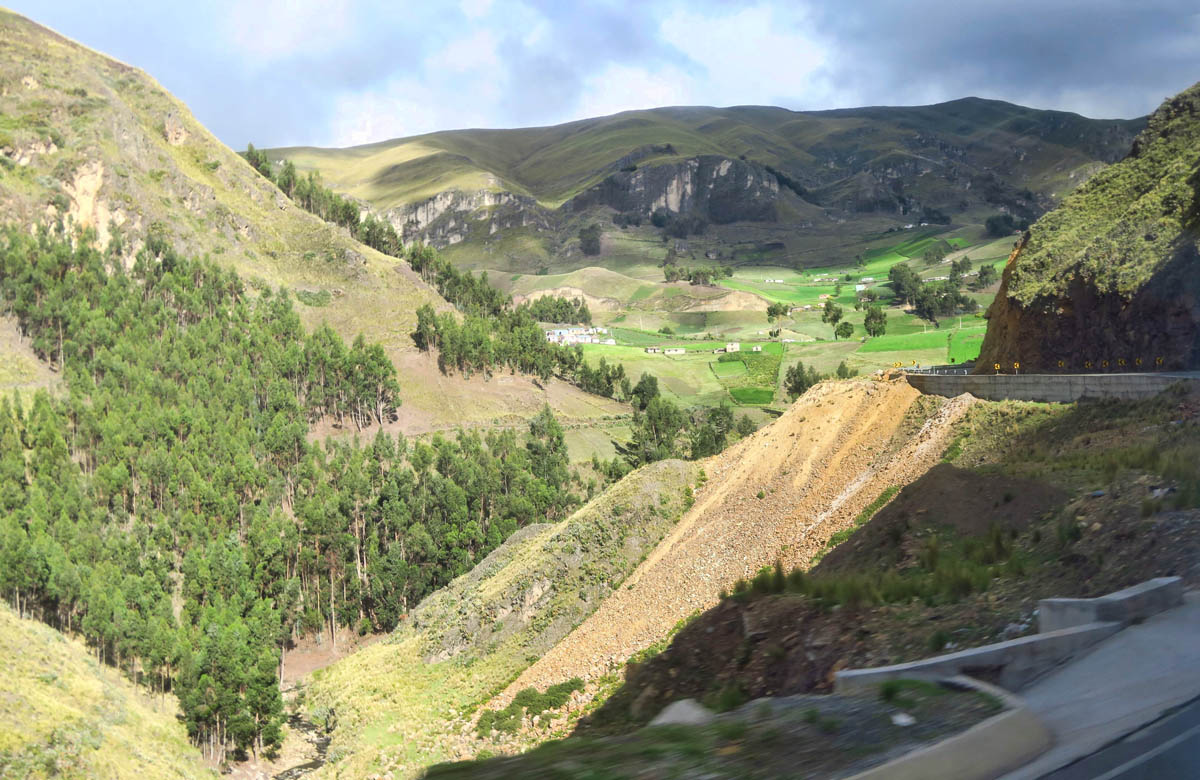

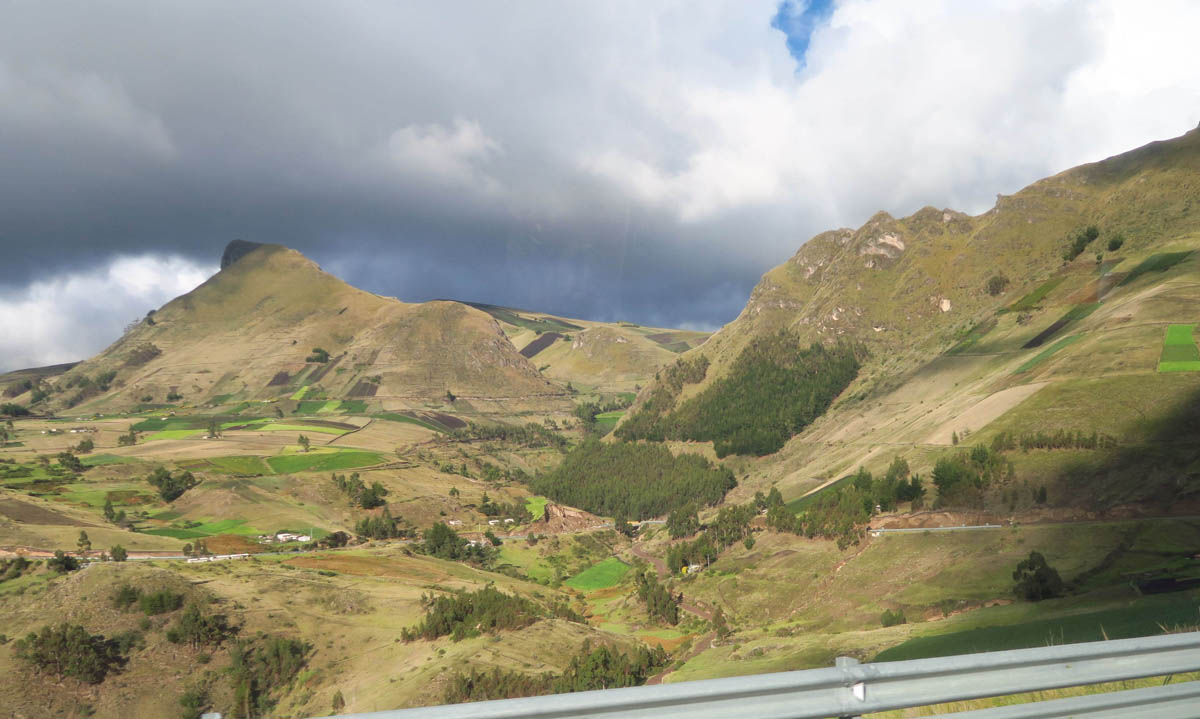
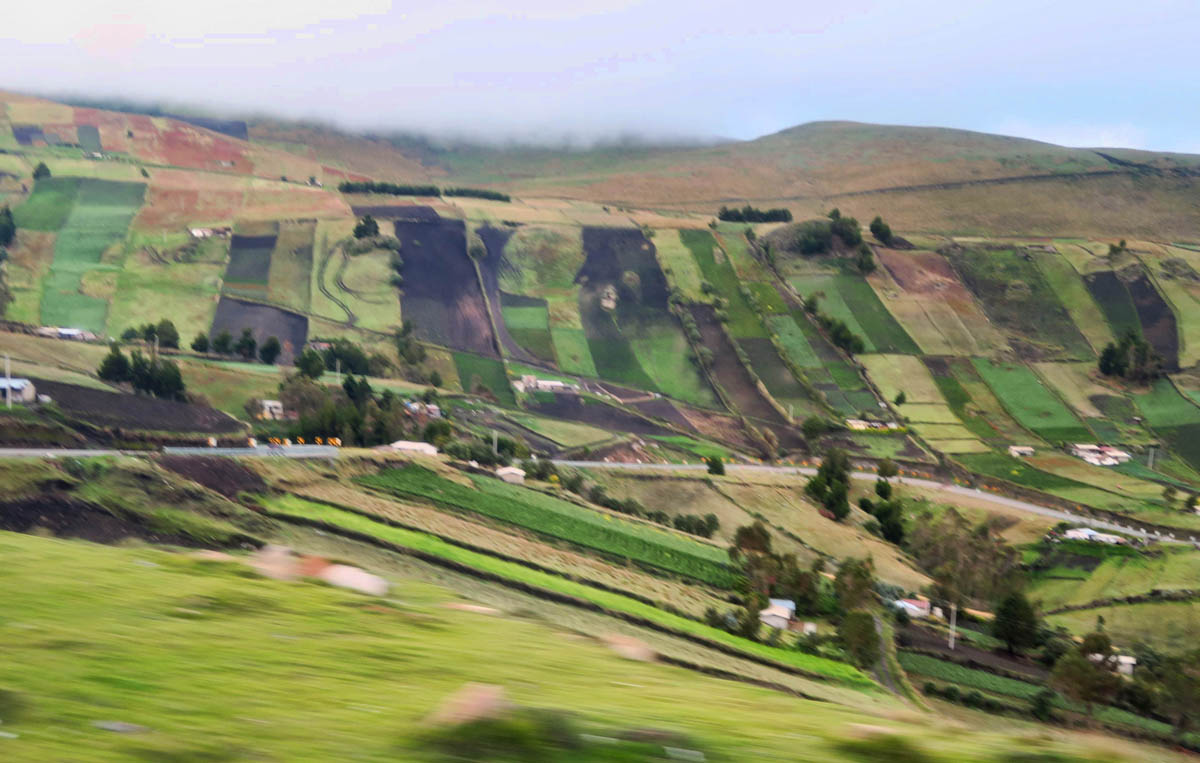
Suzanne, you continue to amaze, educate, and inspire us. Thank you.
Thank you, Linda. I think of you often, and send my best thoughts to you and Chester.
Most conversations begin with, “How are you?”. When I open up my blog. feed, my thoughts run to, ” Where are you?”. So I was happy to see a post telling of your newest adventures. You have really changed it up again! Enjoy all the new sights and experiences. I am reminded of fond memories of our distant travels.
Karen, how nice to hear from you! I hate to admit that I am a “Facebook Lurker,” but I have enjoyed following along, and good to see you are enjoying some time on the road again. Hope our paths cross again one day.
What an interesting post. Actually, I have found ALL your entries to be absolutely the most informative of all the journals I read. This bus ride is now on my bucket list as I have always wanted to view the weaving of the Montecristo hat.
If you were to go to the Galapagos again, what month would you choose and would you recommend the mode of transportation around the islands you used?
Onward to who knows where. Your mother must enjoy these travels you have brought to her.
Marilyn in Dania Beach, FL
Marilyn, what a nice compliment! Thank you, you made my day! As to what month for the Galapagos, well, I would say a lot depends on what you want to see, as certain things are not there during different times of the year. The water temperature is warmer from January to June, making it good for snorkeling without getting cold, but then if you wait too late, you miss some of the more vivid colors brought on by the breeding season. If it weren’t for the fact that I missed the waved albatross, I would say February was ideal. I think I would recommend that same timeframe, but then it’s my only frame of reference.
Due to the change in flora and fauna, the tourism companies of course say there is “no bad time to visit the Galapagos.” I would just say to try to avoid the holiday season, otherwise any time is going to offer up some kind of wonder.
As for mode of transportation, I would say try to pick the smallest boat you can afford for the maximum days at sea. I was on a sailing vessel, but the motor yachts will offer a bit more room and stabilization. The cabins will be larger, as will the lounging space. I really enjoyed the outdoor dining aea on the Beagle, so I would choose one that offered that as an option if possible. In my opinion, the key is to stay under 16 guests, as you can get into the smaller coves with a smaller boat, and enjoy a more intimate experience with the islands.
Thanks so much for the comment. Nice to know you are still following along.
Suzanne (P.S. More to come on the Montecristi hat once the bus stops in Cuenca.)
If you make it to Bahia de Caraquez, visit Coco Bongo Hostel w/ en-suites. Rest among art.
Thanks for the suggestion, Grant. Unfortunately, my blog is lagging far behind me, due to my laptop being stolen in Quito. I had to wait until I was back in the USA and could purchase another laptop in order to continue the blog. But hopefully others will benefit from the suggestion.
You are getting so many different and unique experiences! I think we are living life to the fullest with our U.S. travels and adventures but you are taking it to a whole new level!
Thanks Jim and Barb! I know a lot of RVers only like the RVing bits, so I appreciate you guys sticking with me in between house raising!
What beautiful countryside! And I have to ask, did you have any of those monster oysters? Details, please! (wiping mouth now)
Hi, Cuz. I did not. I love oysters, but I like the little ones that don’t require a whole lot of chewing. 😉 If you like oysters, you have to get Keith to take you to Atkins in Waxahachie once they are back in season!
When I see a posting on your blog, I know I will get my geography lesson for the day. I have now expanded my knowledge of Ecuador! Thanks again for another interesting view of another country!!
I was in my thirties when I had my first dozen oysters in the central market of Baltimore during a business trip. I watched all the people eating them at the kiosks and once I figured the process out I approached and ordered a Bo and dozen from the man behind the counter. What size he asked and I quickly looked and saw that they were of different size so I ordered the largest that I saw, about a quarter the size of those you photographed in Ecuador. I slurped one into my mouth as I had seen the locals do, and OMG!? My brain screamed gasp, choke, spit, while my pride screamed do not look as a fool!!! Pride won as I desperately threw handfuls of crackers into my mouth to give texture and swallowed the whole mess enabled by chugging the Bo. Forty years later, living near the coast in New England I have fallen in love with the local medium sized oysters and although I would love to sample of of the Ecuadorian giants, it would be in bites.
Thanks for the memory hit. The bus ride through that country side is fantastic.
And yes, that foolish american male pride caused me to eat the other 11.
Ahhhh…that Wanderbus! Having spent three years in Italy as a young adult, I long to return. I hesitate because the thought of an arranged crowd tour does not appeal to me yet I do not have the acumen to travel as you do–picking and plucking wonders as you go. But, oh, yes! If Italy adopted such a mode of travel as the Wanderbus I’d be on a plane post haste! Thanks for showing us the colors and excitement of Ecuador! 🙂
What a cool travel arrangement. I’ve just discovered your blog, will be reading a lot more!